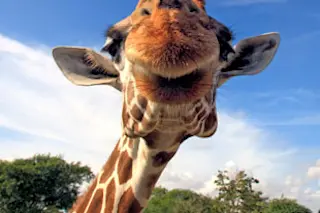When scientists concluded in 2007 that the giraffe—long regarded as a single species, Giraffa camelopardalis—should in fact be classified as six or more species, the news worried schoolchildren and conservationists alike. The finding, based largely on genetic evidence, suggested that these graceful, long-necked animals were in trouble. Lumped together as a single species, the giraffe seemed relatively healthy, with a population of up to 110,000 individuals scattered across sub-Saharan Africa. But split apart into at least six separate groups, some of the most beloved animals on earth suddenly looked “hyper-endangered,” as one researcher put it. The study was unsettling on a more basic level, too. The idea that an animal so well known and so big—the giraffe is the tallest animal on earth—could have so many cryptic species hiding beneath its familiar dappled flesh seemed to call into question the notion of species itself.
The concept of species is among ...















